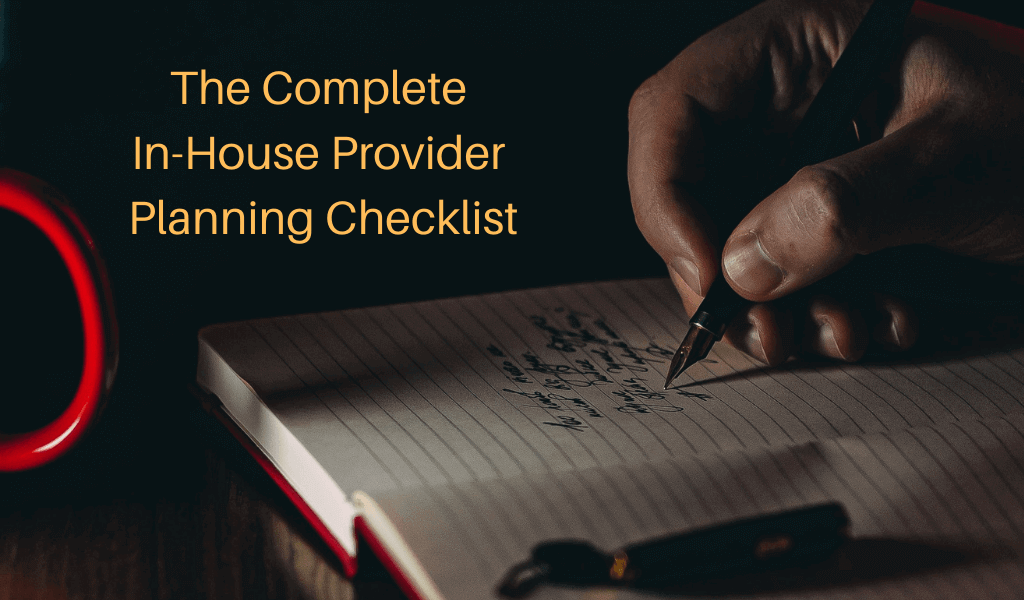For an in-house provider, a planning checklist can be the difference between feeling organized and confident or scattered and behind.
Success as an in-house provider takes planning. And success in planning takes more than just thinking about the goals you want to achieve or the things you need to do. Real success comes in setting touchpoints and hitting targets. It’s a step-by-step process.
That’s not to say each step is one right after the other. We all know that neither life nor business moves in a straight line. Sometimes you walk in circles or take a few steps in the wrong direction. The point is that you know where you’re going, and you have a path laid out to get there – aka a checklist.
A planning checklist for an in-house provider will look a little different than it might for a building services contractor or an independent commercial cleaning company. You may need to work within a budget set by another department. You might need to run every new purchase through the people in accounting. You may be under pressure to change the scope of your work, or you may not have the option to shop around for different vendors.
So what might a checklist look like that takes all that into account?
Keep track of inventory, work orders, and more with Janitorial Manager. Learn more today with a free discovery call!

The in-house provider planning checklist you need to reach your goals
Update software: We aren’t tooting our own horn when we say that the right software should be the very first thing on your in-house provider checklist. Of course, we’re biased, but here are some facts: high-quality janitorial software can help you manage your supply inventory, track your equipment maintenance, change a work order or task list on the fly, improve communication with your team, and create a more efficient schedule.
In fact, this is the one tool that makes everything else on your checklist more attainable. Janitorial software also makes inspections a breeze and lets you document performance and comments regarding any issues that may arise.
Update procedures: Especially with the appearance of a certain virus we’d all love to forget about, cleaning and disinfecting procedures have changed – a lot. No doubt, you’ve already worked through several procedural changes. But since the science on this is updated as we learn more, it’s essential to keep your protocols and your team up-to-date on new approaches.
This goes for other procedures, as well. If you use a new product, discover a better way to keep hand soap dispensers full, or even something small like how to replace vacuum cleaner belts, be sure to add these to your planning checklist. You don’t want these things to get lost in the daily shuffle of work.
Update products and equipment: Is it time to replace a worn-out machine or switch to a new sanitizer? Add it to your planning checklist. These are the things that get pushed back over and over because there’s no time or money. Make a list of what you need and set target dates to procure them. For example, you might not need a new floor scrubber next week, but you will need one soon. Start planning and budgeting for these things now, so you’re ready when the time comes.
Update budget requests: Speaking of budget, this is one area where an in-house provider may or may not have a lot of leeway. Whether you’re given a certain amount to budget as you see fit or if you need to submit a budget to an accounting team, this is the time to look at your budget and figure out what you need.
You may need to do some creative work here. Perhaps you’ll need to offset the cost of a new machine with cuts somewhere else. Or maybe you can get an increase or use general funds to close any gaps. Whatever the case may be, take a look at your budget now and see what your finances look like, so you know what kind of conversation to expect.
Update your scope of work: This item is directly related to your budget and your updated procedures. What exactly should your team do in the coming quarter or year? As an in-house provider, you may need to shift to more disinfecting and sanitizing tasks and leave things like minor landscaping or painting requests for later. You may need to move your team to work different hours than usual to lower the number of people in any given space. You’ve likely already put some of this into action over the past couple of years.
You might also consider additional certifications or learning opportunities for your team that could change the type of work you do or how you do it. As with anything else, though, planning will give you plenty of time to make the workloading adjustments you need to keep things running smoothly.
Employee retention goals: One last item isn’t so much for a planning checklist as it is a goal, and that’s employee retention. We all know it’s time-consuming and expensive to bring new people onto the team. If you’re growing, that can be time and money well spent. However, if you’re continually dealing with replacing people who leave, that can do some real damage to your productivity and efficiency, not to mention the quality of your work. That’s why employee retention is so necessary. It gives your team continuity and builds morale.
Even if your planning checklist looks a little different, it’s important to set yourself up for success. Make your list of ideas, goals, and needs, then get ready to make them a reality.
Clean up your cleaning operation with Janitorial Manager! Manage work orders, inspections, employee performance, and so much more—all in a single app! Learn more today with a free discovery call!

